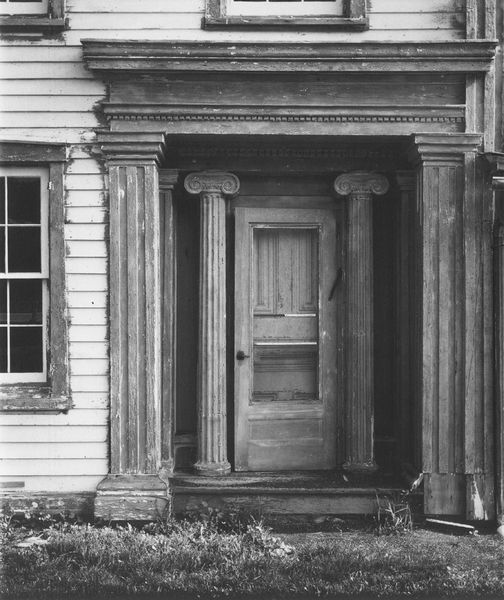Subscriptions
Menu
Advertisements
Photos tribute to our rural past
11/25/2008 |
By Jim Poole |

Haunting images of homes, barns and businesses long gone pay tribute to Schoharie County’s rural past in a new book, “Time Wearing Out Memory.”
The book, by photo-authors Steve Gross and Susan Daley, includes more than 100 black-and-white photos of what was everyday architecture a century ago.
The authors, who live in Manhattan and have a second home in Blenheim, will host a book-signing at Catnap Books on Main Street, Cobleskill, this Saturday starting at 2pm.
Praised by such notables as author Jeffrey Lent and filmmaker Ken Burns, “Time Wearing Out Memory” didn’t start as a book, the authors wrote in an e-mail interview last week.
While driving Schoharie County’s back roads, the authors found the abandoned buildings “were very beautiful, mysterious, intriguing and austere. . .the shapes of these dignified old buildings sitting within their curing landscape. There was a real sense of place.”
Mr. Gross and Ms. Daley took hundreds of photos from 1987 to ’07 and eventually took them to editor Jim Mairs at W.W. Norton publishers. He encouraged them to develop the photos into a book, their eighth.
“Time Wearing Out Memory” isn’t about empty buildings or a documentary about rural architecture.
Instead, the authors wrote, it’s “our own impression and sensibility of a place in time.”
But the book is also about history, about the people who lived here and how they lived.
The places the authors photographed are “links with the America that used to be. And they connect us with the unheralded artisans who created them.”
The title of the book, which is from a line in John M. Brown’s 1823 history of Schoharie County, reflects how the authors feel about these buildings.
“Even back then [1823] there was the feeling that memory fades and places are forgotten, lost to time,” the authors wrote in their photographers’ note in the book.
“These photographs are a record of our own moment of being here in this changing landscape. . .”
Some readers might find the photos of tumble-down barns and buildings depressing. But the authors argue otherwise.
“These buldings are old and worn,” they wrote, “but they’re very unique and beautiful. They hold lots of memories. They’re like old friends.
“So many old places like these are gone from our country, pulled down because they were thought to be useless or destroyed in order to put up ugly developments or strip malls. Now that’s depressing!”
Many of the photos are from Blenheim, Gilboa and Conesville, with a few from the northern end of the county. Most are of abandoned buildings, and since the authors took the photos over 20 years, some are no longer standing––a smokehouse on the Molly Shaffer Farm in Fulton, for instance.
Though some are familiar to many––the Breakabeen General Store––others are so out of the way that most people haven’t seen them in years, if at all.
The authors found them simply by hitting the back roads again and again. Already accomplished photographers, they began shooting, but the process wasn’t a matter of sticking a digital lens out the car window.
Mr. Gross and Ms. Daley used an old, rebuilt 4x5 view camera on a wooden tripod––almost the same vintage as the buildings they were shooting.
The large format provides depth and detail to the photographs, but the time-consuming process also adds to the results.
“Using a view camera on a tripod requires thought and decision,” the authors wrote. “It is not a hasty process, rather one of patience and much deliberation.
“You work with the weather, which in this case is the light, season and time of day. If everything comes together, you get a result you are happy with.”
* * *
Mr. Gross and Ms. Daley, in their 50s, met years ago when studying art and photography at the University of New Mexico. They opened a photo studio in New York, doing still life and advertising work, before focusing on architecture.
Their other books touch on such topics as Greenwich Village, Santa Fe houses, the Catskills, and Creole houses.









